Table of Contents
- What is a Feline Infected Scratch?
- How to Recognize the Symptoms of a Feline Infected Scratch
- Possible Complications of a Feline Infected Scratch
- Diagnosis: How is a Feline Infected Scratch Identified?
- Treatment Options for a Feline Infected Scratch
- Preventing Feline Scratches from Becoming Infected
- When to Seek Medical Attention for a Feline Scratch
What is a Feline Infected Scratch?
Cats are fascinating animals that bring joy and companionship to many households. However, as cuddly as they can be, cats are also known for their sharp claws, which they may use when they feel threatened or uncomfortable. If a cat’s claws are dirty or contaminated with bacteria, it can cause an infection in the person they scratch. This type of scratch is known as a feline infected scratch.
How Does a Feline Infected Scratch Occur?
A feline infected scratch can occur when a cat scratches a person with contaminated claws. Cats are natural hunters and explorers, and they often come into contact with dirt, bacteria, and other germs. When a cat scratches a person, these germs can enter the skin and cause an infection.
Who is at Risk for a Feline Infected Scratch?
Anyone who interacts with cats can be at risk for a feline infected scratch. However, certain people are more susceptible to this type of scratch. Children, elderly individuals, and those with weakened immune systems are more likely to develop an infection from a cat scratch.
What Are the Symptoms of a Feline Infected Scratch?
Symptoms of a feline infected scratch may not appear immediately after the scratch occurs. However, in most cases, symptoms will develop within a few days. Common symptoms include redness, swelling, and tenderness around the scratch. The affected area may also feel warm to the touch, and a discharge of pus may occur.
Conclusion
In conclusion, a feline infected scratch is a type of infection that can occur when a cat scratches a person with contaminated claws. Anyone who interacts with cats can be at risk for this type of scratch, but some people are more susceptible than others. Symptoms of a feline infected scratch may not appear immediately, but it’s important to seek medical attention if you notice any signs of infection. In the next section, we will discuss how to recognize the symptoms of a feline infected scratch.
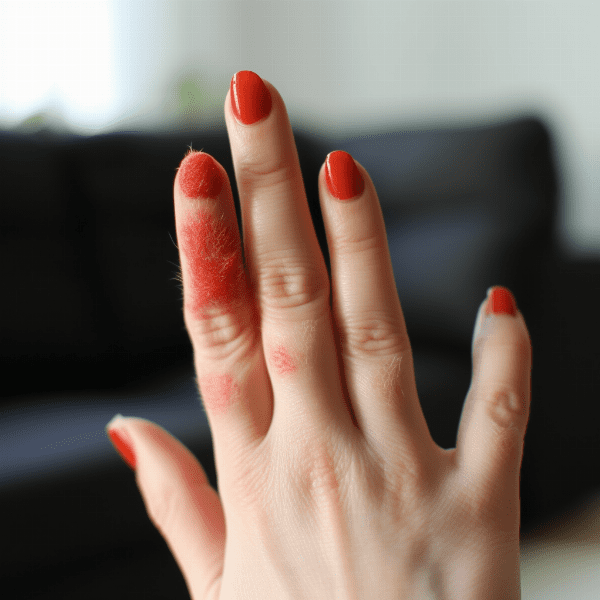
How to Recognize the Symptoms of a Feline Infected Scratch
As we discussed in the previous section, a feline infected scratch can be a serious condition that requires medical attention. In this section, we will discuss how to recognize the symptoms of a feline infected scratch.
Redness and Swelling
One of the most common symptoms of a feline infected scratch is redness and swelling around the affected area. The skin around the scratch may become inflamed and appear redder than the surrounding skin. The area may also feel warm to the touch and be tender or painful.
Pus or Other Discharge
In some cases, a feline infected scratch may produce pus or other types of discharge. The discharge may be yellow or green in color and have a foul odor. This is a sign that the infection has progressed and medical attention is needed.
Fever
If the infection has spread beyond the scratch, it may cause a fever. A fever is a common sign that the body is fighting an infection. If you have a fever along with a feline infected scratch, it’s important to seek medical attention right away.
Fatigue or Malaise
In addition to the physical symptoms, a feline infected scratch may cause fatigue or malaise. You may feel tired or weak, and have a general feeling of discomfort. This is also a sign that the infection has progressed and needs to be treated.
Conclusion
In conclusion, recognizing the symptoms of a feline infected scratch is essential for seeking timely medical attention. Symptoms of a feline infected scratch may include redness and swelling, pus or other discharge, fever, and fatigue. If you experience any of these symptoms, it’s important to seek medical attention right away. In the next section, we will discuss possible complications of a feline infected scratch.
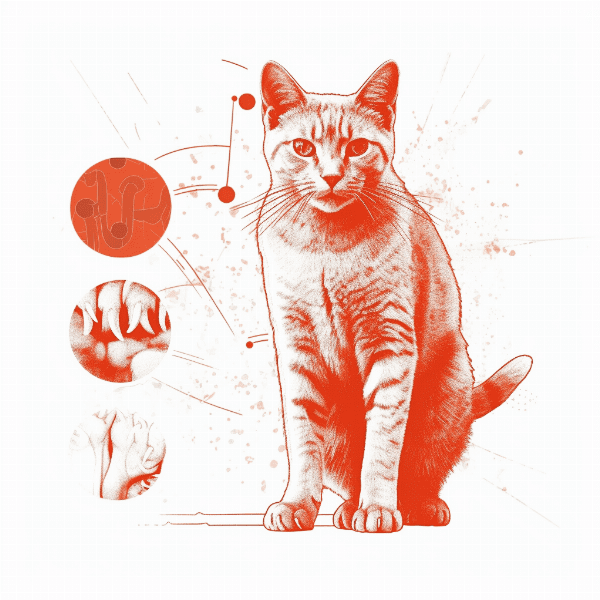
Possible Complications of a Feline Infected Scratch
A feline infected scratch can cause several complications if left untreated. In this section, we will discuss some of the possible complications of a feline infected scratch.
Cellulitis
Cellulitis is a common complication of a feline infected scratch. It occurs when the infection spreads to the deeper layers of the skin and the subcutaneous tissues. Symptoms of cellulitis include redness, warmth, and tenderness around the affected area. If left untreated, cellulitis can spread to other parts of the body and cause more serious complications.
Abscess
An abscess is a collection of pus that forms at the site of the scratch. It is a more severe complication that can occur if the infection is not treated promptly. Symptoms of an abscess may include a lump or swelling at the site of the scratch, fever, and pain. Treatment for an abscess typically involves draining the pus and antibiotics.
Septicemia
In rare cases, a feline infected scratch can lead to septicemia, which is a serious infection that occurs when bacteria enter the bloodstream. Symptoms of septicemia include fever, chills, and a rapid heartbeat. If left untreated, septicemia can be life-threatening.
Conclusion
In conclusion, a feline infected scratch can cause several complications if left untreated. These complications may include cellulitis, abscess, and septicemia. It’s important to seek medical attention if you experience any symptoms of a feline infected scratch to prevent these complications from occurring. In the next section, we will discuss how a feline infected scratch is diagnosed.
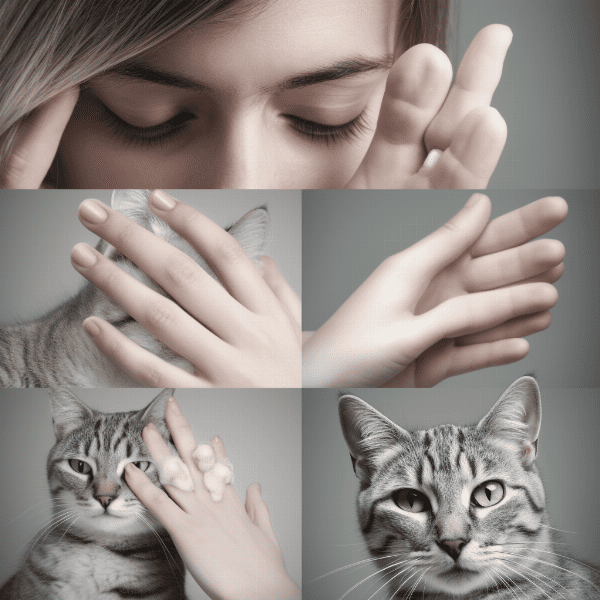
Diagnosis: How is a Feline Infected Scratch Identified?
If you suspect that you have a feline infected scratch, it’s important to seek medical attention as soon as possible. In this section, we will discuss how a feline infected scratch is diagnosed.
Physical Examination
The first step in diagnosing a feline infected scratch is a physical examination. Your healthcare provider will examine the affected area and look for signs of redness, swelling, and discharge. They may also check for signs of cellulitis or abscess.
Medical History
Your healthcare provider will also ask you about your medical history and any recent interactions you may have had with cats. It’s important to disclose any information about previous scratches or bites you may have received from cats, as this can help with the diagnosis.
Skin Culture
In some cases, your healthcare provider may order a skin culture to identify the specific bacteria causing the infection. This involves taking a sample of the skin and sending it to a laboratory for testing.
Blood Tests
If the infection has spread beyond the affected area, your healthcare provider may order blood tests to check for signs of septicemia. These tests can also help determine the severity of the infection.
Conclusion
In conclusion, a feline infected scratch can be diagnosed through a physical examination, medical history, skin culture, and blood tests. It’s important to seek medical attention if you suspect that you have a feline infected scratch to prevent complications and ensure prompt treatment. In the next section, we will discuss treatment options for a feline infected scratch.
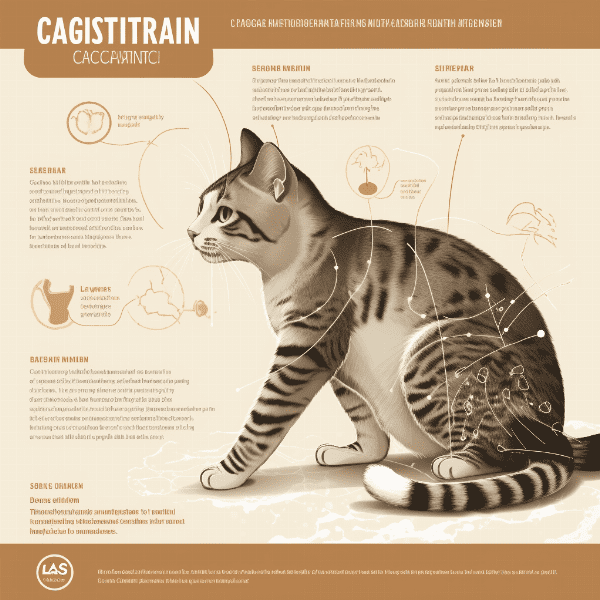
Treatment Options for a Feline Infected Scratch
Treatment for a feline infected scratch may vary depending on the severity of the infection. In this section, we will discuss some of the treatment options for a feline infected scratch.
Cleaning the Wound
The first step in treating a feline infected scratch is to clean the wound thoroughly with soap and water. This can help remove any bacteria or dirt that may be present on the skin.
Antibiotics
In most cases, antibiotics are prescribed to treat a feline infected scratch. The type of antibiotic prescribed will depend on the severity of the infection and the type of bacteria causing it. It’s important to take the full course of antibiotics as prescribed by your healthcare provider, even if symptoms improve.
Warm Compress
Applying a warm compress to the affected area can help reduce swelling and promote healing. This can also help alleviate any pain or discomfort associated with the infection.
Pain Relief Medication
Over-the-counter pain relief medication such as acetaminophen or ibuprofen may be recommended to help alleviate pain and reduce fever.
Conclusion
In conclusion, treatment options for a feline infected scratch may include cleaning the wound, antibiotics, warm compresses, and pain relief medication. It’s important to seek medical attention if you suspect that you have a feline infected scratch to ensure prompt treatment and prevent complications. In the next section, we will discuss how to prevent feline scratches from becoming infected.
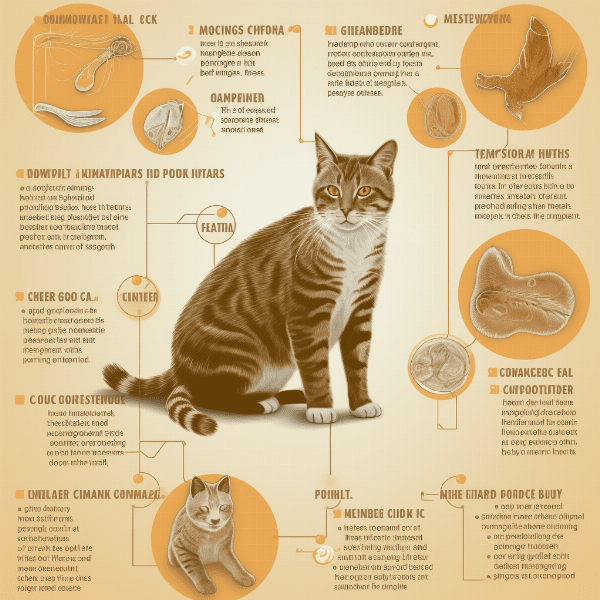
Preventing Feline Scratches from Becoming Infected
Preventing feline scratches from becoming infected is an important step in protecting yourself and your family. In this section, we will discuss some tips for preventing feline scratches from becoming infected.
Keep Your Cat’s Claws Trimmed
Keeping your cat’s claws trimmed can help reduce the risk of scratches. You can trim your cat’s claws at home or take them to a groomer or veterinarian to have them trimmed.
Avoid Rough Play
Avoid rough play with your cat, as this can increase the risk of scratches. Instead, engage in gentle play activities with your cat, such as using toys or playing hide-and-seek.
Wash Your Hands
Washing your hands after interacting with your cat can help reduce the risk of infection. Use soap and warm water to wash your hands thoroughly.
Wear Protective Clothing
If you are handling a cat that is known to scratch, wear protective clothing such as gloves and long sleeves to reduce the risk of scratches.
Conclusion
In conclusion, preventing feline scratches from becoming infected is an important step in protecting yourself and your family. Tips for preventing feline scratches from becoming infected include keeping your cat’s claws trimmed, avoiding rough play, washing your hands, and wearing protective clothing. By following these tips, you can reduce the risk of a feline infected scratch and protect your health. In the final section, we will discuss when to seek medical attention for a feline scratch.
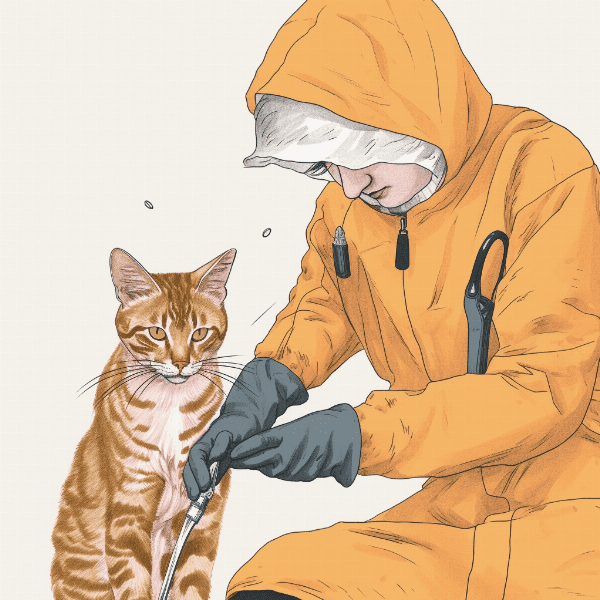
When to Seek Medical Attention for a Feline Scratch
Knowing when to seek medical attention for a feline scratch is important for preventing complications. In this section, we will discuss when to seek medical attention for a feline scratch.
Signs of Infection
If you notice any signs of infection, such as redness, swelling, or pus, seek medical attention right away. These are signs that the scratch has become infected and requires prompt treatment.
Symptoms of Cellulitis or Abscess
If you experience symptoms of cellulitis or abscess, such as a lump, fever, or pain, seek medical attention as soon as possible. These are more severe complications that require medical treatment.
Chronic or Persistent Symptoms
If you have a feline scratch that is not healing or is causing chronic or persistent symptoms, such as fever, fatigue, or malaise, seek medical attention. This may be a sign of a more serious underlying condition.
Pre-Existing Medical Conditions
If you have pre-existing medical conditions or a weakened immune system, it’s important to seek medical attention if you receive a feline scratch. This can help prevent complications and ensure prompt treatment.
Conclusion
In conclusion, knowing when to seek medical attention for a feline scratch is important for preventing complications and promoting healing. If you notice any signs of infection, symptoms of cellulitis or abscess, chronic or persistent symptoms, or have pre-existing medical conditions, seek medical attention right away. With proper treatment and prevention techniques, you can reduce the risk of a feline infected scratch and protect your health.




